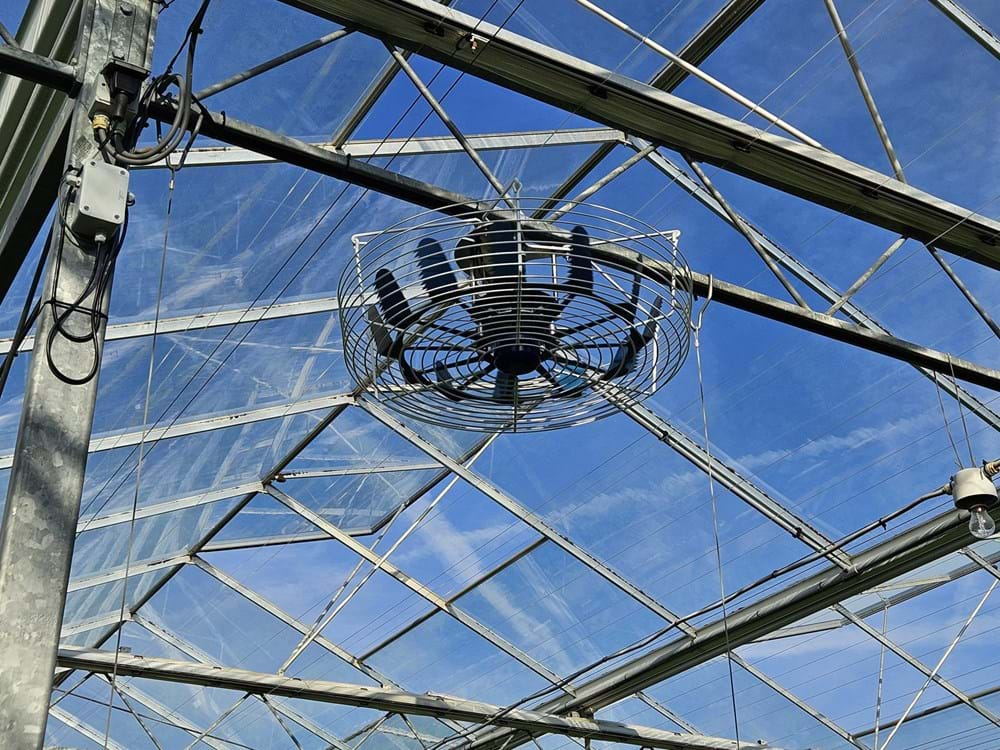In Linkhout, Belgium, there is a special family business that has been rooted in horticulture for three decades. Since 2013, the Linkertse Aardbeienautomaat—run by 23-year-old Robbe Reijnders and his parents—has been fully dedicated to growing delicious strawberries. Their secret? A smart combination of technology, attention to the crop and a direct connection with the consumer.
Taste over kilos
“We consciously choose varieties that excel in taste, not in productivity,” says Robbe. In the 1.25 hectare glass greenhouse and 5,000 m² plastic greenhouse, 350,000 plants are planted annually, good for a production of 150 tons of strawberries. The varieties Elsanta, Sonsation, Karima and Parlando have all been selected for firmness, long shelf life and above all taste. “Our customers know what they come back for,” says Robbe. “We hear that every day via our strawberry vending machines.”

Directly from grower to customer
These vending machines, now at three locations, have been a household name in the region for twelve years. What started as a new idea to deliver directly to consumers, grew into a fully-fledged sales channel. “We now see that consumers have become much more critical. They can taste the difference. Our vending machines guarantee that the strawberry goes from plant to customer within 24 hours.” Approximately 10% of the harvest goes through the strawberry vending machines, the rest is marketed through the BelOrta cooperative. The strawberries are sold there the next morning. But what happens after that is beyond their control: the strawberries go via distribution centres and intermediaries to the supermarket, where they often first end up in the warehouse before they reach the shelves. “In this way, strawberries are sometimes on the road for a week – and you can taste that. A shame, as far as I'm concerned. I believe it can be done faster and better.”
Apart from the fact that the strawberries from the vending machine are super fresh, Robbe also gets a lot of pleasure from the direct contact with the consumer. “You hear what they like, what could be improved and you really know who you are doing it for.”
Challenges in the greenhouse climate
In addition to the 1.25 hectare glass greenhouse, the family business also grows 0.5 hectares under plastic. “Growing outdoors forces you to accept what nature gives you,” says Robbe. “But it also teaches you a lot about what happens in the greenhouse. Everything you see outside (wind, moisture, sun) helps to control the inside better.” ClimaFlow fans from Svensson have been hanging in that greenhouse for a year now, and they have proven to be a big step forward. “They have more effect than expected. At the beginning of the season, we even had to turn them back a bit, because otherwise young plants evaporated too much and to give the root the chance to develop quietly first. Now we control them via frequency and in this way we keep the microclimate well under control. We feel that the plant is now much faster dry in the morning.”
Between bumblebees and bees
Bumblebees are standard in strawberry cultivation, but Robbe also wants to use bees soon. He has recently become an official beekeeper. “My father asked: why don’t you do it yourself? And I liked that idea. Now I have five colonies of bees and I want to go to seven, so that I can use them effectively in the greenhouse. Bees complement bumblebees well. They fly differently, work faster and ensure that the bumblebees can follow the peak of the flowers more easily.”
Local forces
Good people are indispensable in a strawberry farm where the work fluctuates greatly between peaks and troughs. Especially during the planting and harvesting period, extra help is needed. At Linkertse Aardbeienautomaat they have found a sustainable and social solution for this. “We mainly work with Turkish women from the area, whose husbands used to work in the mines. They are incredibly loyal and form a close-knit team. For the planting work we also employ asylum seekers from the region. In this way we create local employment and we can rely on a motivated team. We are very happy with that.”
